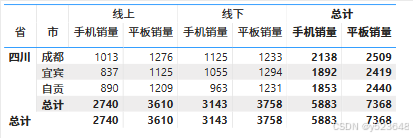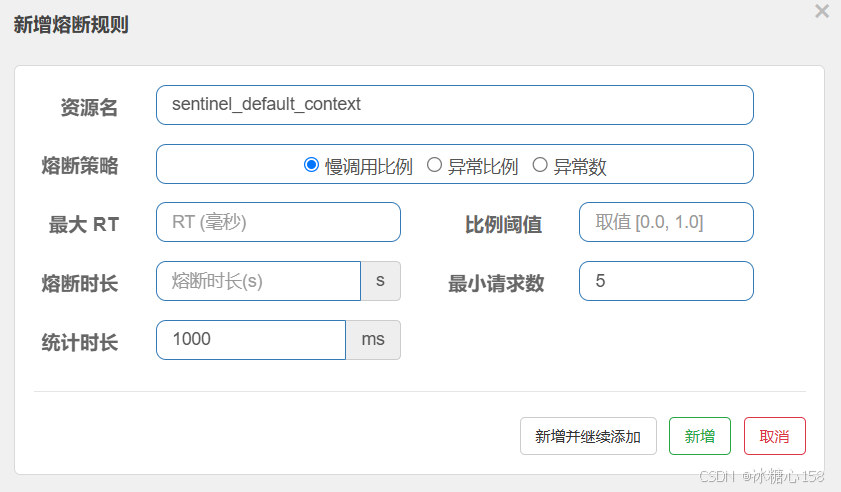文章目录
- 1.背景
- 2.微调方式
- 2.1 关键环境版本信息
- 2.2 步骤
- 2.2.1 下载llama-factory
- 2.2.2 准备数据集
- 2.2.3 微调模式
- 2.2.3.1 zero-3微调
- 2.2.3.2 zero-2微调
- 2.2.3.3 单卡Lora微调
- 2.3 踩坑经验
- 2.3.1 问题一:ValueError: Undefined dataset xxxx in dataset_info.json.
- 2.3.2 问题二: ValueError: Target modules {'c_attn'} not found in the base model. Please check the target modules and try again.
- 2.3.3 问题三: RuntimeError: The size of tensor a (1060864) must match the size of tensor b (315392) at non-singleton dimension 0。
- 2.3.4 问题四: 训练效率问题
- 2.4 实验
- 2.4.1 实验1:多GPU微调-zero2
- 2.4.2 实验2:多GPU微调-zero3
- 2.4.3 实验3:Lora单卡微调
- 3 合并大模型并启动
- 3.1 方法一:Llama-factory合并,并使用ollama调用大模型
- 3.2 方法二:Llama-factory合并,并使用vllm启动模型服务
1.背景
上一篇文件写到,macbook微调Lora,该微调方式,同样适用于GPU,只不过在train.py脚本中,针对device,调整为cuda即可。
但如果数据量过大的话,单卡微调会存在瓶颈,因此考虑多GPU进行微调。网上找了一圈,多卡微调的常用方式采用deepspeed+Llama-factory。
本文主要记录该方式的微调情况,仅为个人学习记录
2.微调方式
2.1 关键环境版本信息
| 模块 | 版本 |
|---|---|
| python | 3.10 |
| CUDA | 12.6 |
| torch | 2.5.1 |
| peft | 0.12.0 |
| transformers | 4.46.2 |
| accelerate | 1.1.1 |
| trl | 0.9.6 |
| deepspeed | 0.15.4 |
2.2 步骤
2.2.1 下载llama-factory
git clone --depth 1 https://github.com/hiyouga/LLaMA-Factory.git
cd LLaMA-Factory
pip install -e ".[torch,metrics]"
2.2.2 准备数据集
数据集采用网上流传的《甄嬛传》,数据集结构如下,数据集命名【huanhuan.json】
[{"instruction": "小姐,别的秀女都在求中选,唯有咱们小姐想被撂牌子,菩萨一定记得真真儿的——","input": "","output": "嘘——都说许愿说破是不灵的。"},...
]
其次,还得准备数据集信息【dataset_info.json】,因为是本地微调,所以微调时现访问dataset_info,再指定到具体的数据集中。
{"identity": {"file_name": "test_data.json"}
}注意文本的数据集的格式必须为,json,不然会报错。
2.2.3 微调模式
2.2.3.1 zero-3微调
本次微调采用zero-3的方式,因此在LLaMa-Factory目录下,新增配置文件【ds_config_zero3.json】。
相关配置可参考【./LLaMA-Factory/examples/deepspeed/文件夹下的样例】

配置如下【ds_config_zero3.json】
{"fp16": {"enabled": "auto","loss_scale": 0,"loss_scale_window": 1000,"initial_scale_power": 16,"hysteresis": 2,"min_loss_scale": 1},"bf16": {"enabled": "auto"},"optimizer": {"type": "AdamW","params": {"lr": "auto","betas": "auto","eps": "auto","weight_decay": "auto"}},"scheduler": {"type": "WarmupLR","params": {"warmup_min_lr": "auto","warmup_max_lr": "auto","warmup_num_steps": "auto"}},"zero_optimization": {"stage": 3,"offload_optimizer": {"device": "none","pin_memory": true},"offload_param": {"device": "none","pin_memory": true},"overlap_comm": true,"contiguous_gradients": true,"sub_group_size": 1e9,"reduce_bucket_size": "auto","stage3_prefetch_bucket_size": "auto","stage3_param_persistence_threshold": "auto","stage3_max_live_parameters": 1e9,"stage3_max_reuse_distance": 1e9,"stage3_gather_16bit_weights_on_model_save": true},"gradient_accumulation_steps": "auto","gradient_clipping": "auto","steps_per_print": 100,"train_batch_size": "auto","train_micro_batch_size_per_gpu": "auto","wall_clock_breakdown": false
}微调脚本
# run_train_bash.sh
#!/bin/bash
# 记录开始时间
START=$(date +%s.%N)
CUDA_VISIBLE_DEVICES=0,1,2,3,4,5,6,7 accelerate launch src/train.py \--deepspeed ds_config_zero3.json \--stage sft \--do_train True \--model_name_or_path /root/ai_project/fine-tuning-by-lora/models/model/qwen/Qwen2___5-7B-Instruct \--finetuning_type lora \--template qwen \--dataset_dir /root/ai_project/fine-tuning-by-lora/dataset/ \--dataset identity \--cutoff_len 1024 \--num_train_epochs 5 \--max_samples 100000 \--per_device_train_batch_size 4 \--gradient_accumulation_steps 4 \--lr_scheduler_type cosine \--learning_rate 5e-04 \--lr_scheduler_type cosine \--max_grad_norm 1.0 \--logging_steps 5 \--save_steps 100 \--neftune_noise_alpha 0 \--lora_rank 8 \--lora_dropout 0.1 \--lora_alpha 32 \--lora_target q_proj,v_proj,k_proj,gate_proj,up_proj,o_proj,down_proj \--output_dir ./output/qwen_7b_ds/train_2025_02_13 \--bf16 True \--plot_loss True# 记录结束时间
END=$(date +%s.%N)
# 计算运行时间
DUR=$(echo "$END - $START" | bc)
# 输出运行时间
printf "Execution time: %.6f seconds\n" $DUR
说明一下上述一些关键参数:
| 参数 | 版本 |
|---|---|
| –deepspeed | 指定deepspeed加速微调方式 |
| –model_name_or_path | 微调模型路径 |
| –finetuning_type | 微调方式,这里用lora微调 |
| –template | 训练和推理时构造 prompt 的模板,不同大语言模型的模板不一样,这里用的是qwen |
| –dataset_dir | 本地的数据集路径 |
| –dataset | 指定dataset_info.json中哪个数据集 |
| –lora_target | 应用 LoRA 方法的模块名称。 |
| –output_dir | 模型输出路径。 |
模型微调参数可以参考:Llama-Factory参数介绍
其他参数,其实就是常规使用peft进行lora微调的常见参数,以及常见的微调参数,可以对照如下。
lora_config = LoraConfig(task_type=TaskType.CAUSAL_LM,target_modules=["q_proj", "k_proj", "v_proj", "o_proj", "gate_proj", "up_proj", "down_proj"],inference_mode=False,r=8,lora_alpha=32,lora_dropout=0.1
)
2.2.3.2 zero-2微调
zero-2下述的配置中,调度器使用了AdamW,学习率在训练时候可以逐步下降。
配置如下【ds_config_zero2.json】
{"fp16": {"enabled": "auto","loss_scale": 0,"loss_scale_window": 1000,"initial_scale_power": 16,"hysteresis": 2,"min_loss_scale": 1},"bf16": {"enabled": "auto"},"optimizer": {"type": "AdamW","params": {"lr": "auto","betas": "auto","eps": "auto","weight_decay": "auto"}},"zero_optimization": {"stage": 2,"offload_optimizer": {"device": "cpu","pin_memory": true}},"gradient_accumulation_steps": 4,"gradient_clipping": "auto","steps_per_print": 100,"train_batch_size": "auto","train_micro_batch_size_per_gpu": "auto","wall_clock_breakdown": false
}
2.2.3.3 单卡Lora微调
具体使用可以参考上一篇文章:【个人开发】macbook m1 Lora微调qwen大模型
也可以参考github项目:fine-tuning-by-Lora
微调代码如下。
torch_dtype = torch.halflora_config = LoraConfig(task_type=TaskType.CAUSAL_LM,target_modules=["q_proj", "k_proj", "v_proj", "o_proj", "gate_proj", "up_proj", "down_proj"],inference_mode=False,r=8,lora_alpha=32,lora_dropout=0.1
)def train():# 加载模型model_dir = snapshot_download(model_id=model_id, cache_dir=f"{models_dir}/model", revision='master')if model_path != model_dir:raise Exception(f"model_path:{model_path} != model_dir:{model_dir}")model = AutoModelForCausalLM.from_pretrained(model_path,device_map=device, torch_dtype=torch_dtype)model.enable_input_require_grads() # 开启梯度检查点时,要执行该方法# 加载数据df = pd.read_json(dataset_file)ds = Dataset.from_pandas(df)print(ds[:3])# 处理数据tokenizer = AutoTokenizer.from_pretrained(model_path, use_fast=False, trust_remote_code=True)tokenizer.pad_token = tokenizer.eos_tokendef process_func(item):MAX_LENGTH = 384 # Llama分词器会将一个中文字切分为多个token,因此需要放开一些最大长度,保证数据的完整性input_ids, attention_mask, labels = [], [], []instruction = tokenizer(f"<|start_header_id|>user<|end_header_id|>\n\n{item['instruction'] + item['input']}<|eot_id|><|start_header_id|>assistant<|end_header_id|>\n\n",add_special_tokens=False) # add_special_tokens 不在开头加 special_tokensresponse = tokenizer(f"{item['output']}<|eot_id|>", add_special_tokens=False)input_ids = instruction["input_ids"] + response["input_ids"] + [tokenizer.pad_token_id]attention_mask = instruction["attention_mask"] + response["attention_mask"] + [1] # 因为eos token咱们也是要关注的所以 补充为1labels = [-100] * len(instruction["input_ids"]) + response["input_ids"] + [tokenizer.pad_token_id]if len(input_ids) > MAX_LENGTH: # 做一个截断input_ids = input_ids[:MAX_LENGTH]attention_mask = attention_mask[:MAX_LENGTH]labels = labels[:MAX_LENGTH]return {"input_ids": input_ids,"attention_mask": attention_mask,"labels": labels}tokenized_id = ds.map(process_func, remove_columns=ds.column_names)tokenizer.decode(list(filter(lambda x: x != -100, tokenized_id[1]["labels"])))# 加载lora权重model = get_peft_model(model, lora_config)# 训练模型training_args = TrainingArguments(output_dir=checkpoint_dir,per_device_train_batch_size=4,gradient_accumulation_steps=4,logging_steps=5,num_train_epochs=30,save_steps=100,learning_rate=5e-04,save_on_each_node=True,gradient_checkpointing=True,)trainer = Trainer(model=model,args=training_args,train_dataset=tokenized_id,data_collator=DataCollatorForSeq2Seq(tokenizer=tokenizer, padding=True),)trainer.train()# 保存模型trainer.model.save_pretrained(lora_dir)tokenizer.save_pretrained(lora_dir)
2.3 踩坑经验
2.3.1 问题一:ValueError: Undefined dataset xxxx in dataset_info.json.
如果你脚本的启动参数,–dataset identity。而dataset_info.json中的数据信息,没有“identity”这个key,则会出现这个报错,只要确保你dataset_info.json中存在该key即可。
2.3.2 问题二: ValueError: Target modules {‘c_attn’} not found in the base model. Please check the target modules and try again.
如果你脚本的启动参数,–lora_target参数设为常见的c_attn参数,则会报此错。处理方式还是调整参数,使用Lora微调时的常见参数,q_proj,v_proj,k_proj,gate_proj,up_proj,o_proj,down_proj。注意格式,如果格式不对,还是会报错。
2.3.3 问题三: RuntimeError: The size of tensor a (1060864) must match the size of tensor b (315392) at non-singleton dimension 0。
这种tensor的问题,很可能是模型冲突的问题,比如调到一半,然后重新提调,指到相同的路径。重新指定output路径即可。
2.3.4 问题四: 训练效率问题
在GPU充分的情况下,使用zero_2的训练效率,很明显比zero_3的训练效率更快!
2.4 实验
本次测试使用多GPU微调,测试多GPU微调跟单GPU微调的性能对比。
使用2,030条数据,epoch = 30 ,batch size = 4,Gradient Accumulation steps = 4
| 实验组 | 实验类别 | 耗时 | 最终loss |
|---|---|---|---|
| 实验1 | zero2微调 | 09:59 | 0.4757 |
| 实验2 | zero3微调 | 1:49:11 | 0.0746 |
| 实验3 | 单卡lora微调 | 【待补充】 | 【待补充】 |
2.4.1 实验1:多GPU微调-zero2
使用2,030条数据,8卡微调,微调参数如下,总共480步,耗时09:59。
[INFO|trainer.py:2369] 2025-02-17 12:53:54,461 >> ***** Running training *****
[INFO|trainer.py:2370] 2025-02-17 12:53:54,461 >> Num examples = 2,030
[INFO|trainer.py:2371] 2025-02-17 12:53:54,461 >> Num Epochs = 30
[INFO|trainer.py:2372] 2025-02-17 12:53:54,461 >> Instantaneous batch size per device = 4
[INFO|trainer.py:2375] 2025-02-17 12:53:54,461 >> Total train batch size (w. parallel, distributed & accumulation) = 128
[INFO|trainer.py:2376] 2025-02-17 12:53:54,461 >> Gradient Accumulation steps = 4
[INFO|trainer.py:2377] 2025-02-17 12:53:54,461 >> Total optimization steps = 480
[INFO|trainer.py:2378] 2025-02-17 12:53:54,465 >> Number of trainable parameters = 20,185,088***** train metrics *****epoch = 30.0total_flos = 234733999GFtrain_loss = 1.6736train_runtime = 0:09:59.38train_samples_per_second = 101.605train_steps_per_second = 0.801
Figure saved at: ./output/qwen_7b_ft/zero2/training_loss.png
GPU使用情况如下:

损失下降情况:

2.4.2 实验2:多GPU微调-zero3
使用2,030条数据,8卡微调,微调参数如下,总共480步,耗时1:49:11。
[INFO|trainer.py:2369] 2025-02-17 13:07:48,438 >> ***** Running training *****
[INFO|trainer.py:2370] 2025-02-17 13:07:48,438 >> Num examples = 2,030
[INFO|trainer.py:2371] 2025-02-17 13:07:48,438 >> Num Epochs = 30
[INFO|trainer.py:2372] 2025-02-17 13:07:48,438 >> Instantaneous batch size per device = 4
[INFO|trainer.py:2375] 2025-02-17 13:07:48,438 >> Total train batch size (w. parallel, distributed & accumulation) = 128
[INFO|trainer.py:2376] 2025-02-17 13:07:48,438 >> Gradient Accumulation steps = 4
[INFO|trainer.py:2377] 2025-02-17 13:07:48,438 >> Total optimization steps = 480
[INFO|trainer.py:2378] 2025-02-17 13:07:48,442 >> Number of trainable parameters = 20,185,088...***** train metrics *****epoch = 30.0total_flos = 257671GFtrain_loss = 0.3719train_runtime = 1:49:11.88train_samples_per_second = 9.295train_steps_per_second = 0.073
Figure saved at: ./output/qwen_7b_ft/zero3/training_loss.png
[WARNING|2025-02-17 14:57:11] llamafactory.extras.ploting:162 >> No metric eval_loss to plot.
[WARNING|2025-02-17 14:57:11] llamafactory.extras.ploting:162 >> No metric eval_accuracy to plot.
[INFO|modelcard.py:449] 2025-02-17 14:57:11,629 >> Dropping the following result as it does not have all the necessary fields:GPU使用情况如下:

损失下降情况:

2.4.3 实验3:Lora单卡微调
【待补充】
3 合并大模型并启动
3.1 方法一:Llama-factory合并,并使用ollama调用大模型
模型合并
利用Llama-factory的框架,配置llama3_lora_sft_qwen.yaml 文件,进行模型合并。
# llama3_lora_sft_qwen.yaml
### model
model_name_or_path: /root/ai_project/fine-tuning-by-lora/models/model/qwen/Qwen2___5-7B-Instruct
adapter_name_or_path: /root/ai_project/LLaMA-Factory/output/qwen_7b_ds/zero2/
template: qwen
trust_remote_code: true### export
export_dir: output/llama3_lora_sft_qwen
export_size: 5
export_device: gpu
export_legacy_format: false
llamafactory-cli export llama3_lora_sft_qwen.yaml
模型打包
合并完成后,会有直接生成Modelfile文件,可以直接打包到ollama中。

# ollama modelfile auto-generated by llamafactory
FROM .TEMPLATE """{{ if .System }}<|im_start|>system
{{ .System }}<|im_end|>
{{ end }}{{ range .Messages }}{{ if eq .Role "user" }}<|im_start|>user
{{ .Content }}<|im_end|>
<|im_start|>assistant
{{ else if eq .Role "assistant" }}{{ .Content }}<|im_end|>
{{ end }}{{ end }}"""SYSTEM """You are a helpful assistant."""PARAMETER stop "<|im_end|>"
PARAMETER num_ctx 4096
模型启动
ollama启动
ollama create llama3_lora_sft_qwen -f Modelfile
参考文章:大模型开发和微调工具Llama-Factory–>LoRA合并
3.2 方法二:Llama-factory合并,并使用vllm启动模型服务
模型的合并同方法一,之后使用vllm命令启动。
vllm命令启动模型服务
# 内置了vllm的qwen的template。
CUDA_VISIBLE_DEVICES=1,2,3,4 python3 -m vllm.entrypoints.openai.api_server \--model "/root/ai_project/LLaMA-Factory/output/merge/" \--port 6006 \--tensor-parallel-size 4 \--served-model-name Qwen2.5-7B-sft \--max-model-len 8192 \--dtype half \--host 0.0.0.0
模型服务接口调用
import requestsdef chat_with_vllm(prompt, port=6006):url = f"http://localhost:{port}/v1/chat/completions"headers = {"Content-Type": "application/json"}data = {"model": "Qwen2.5-7B-sft", # 模型名称或路径"messages": [{"role": "user", "content": prompt}],"max_tokens": 512,"temperature": 0.7}response = requests.post(url, headers=headers, json=data)if response.status_code == 200:result = response.json()generated_text = result["choices"][0]["message"]["content"]print(generated_text.strip())else:print("Error:", response.status_code, response.text)# 示例调用
chat_with_vllm("你是谁?", port=6006)
服务日志:

说明:日志中可以看到template。
调用结果:




















